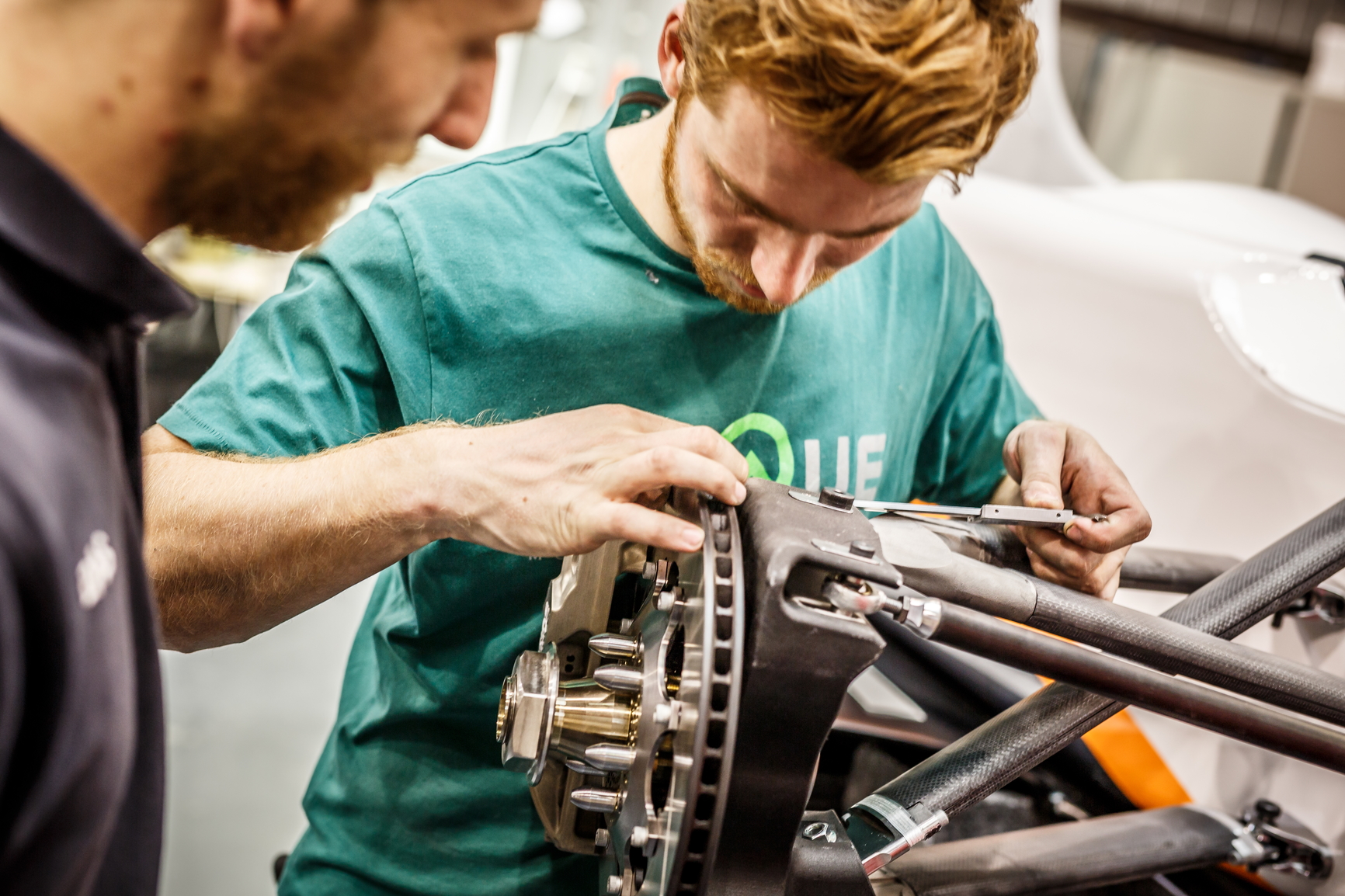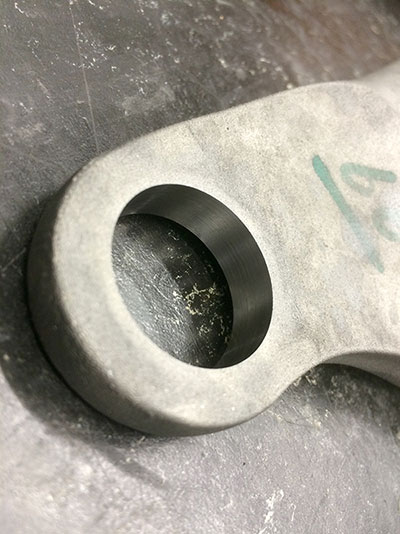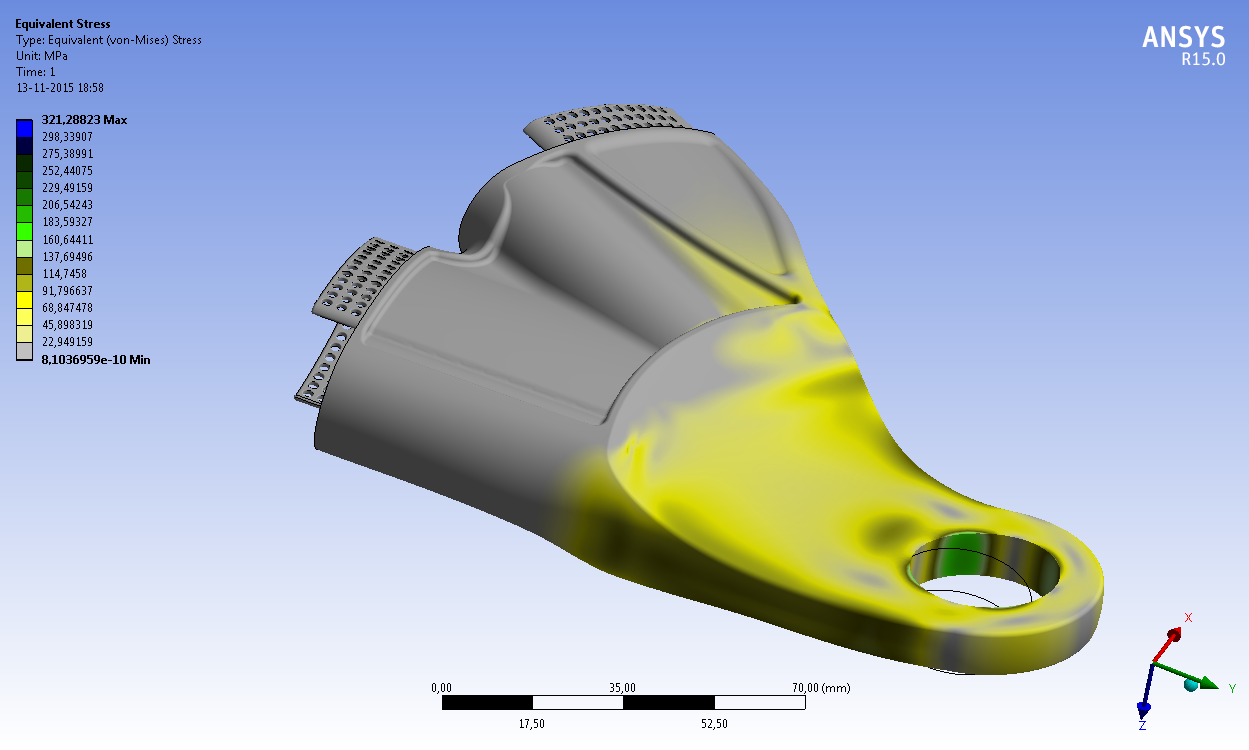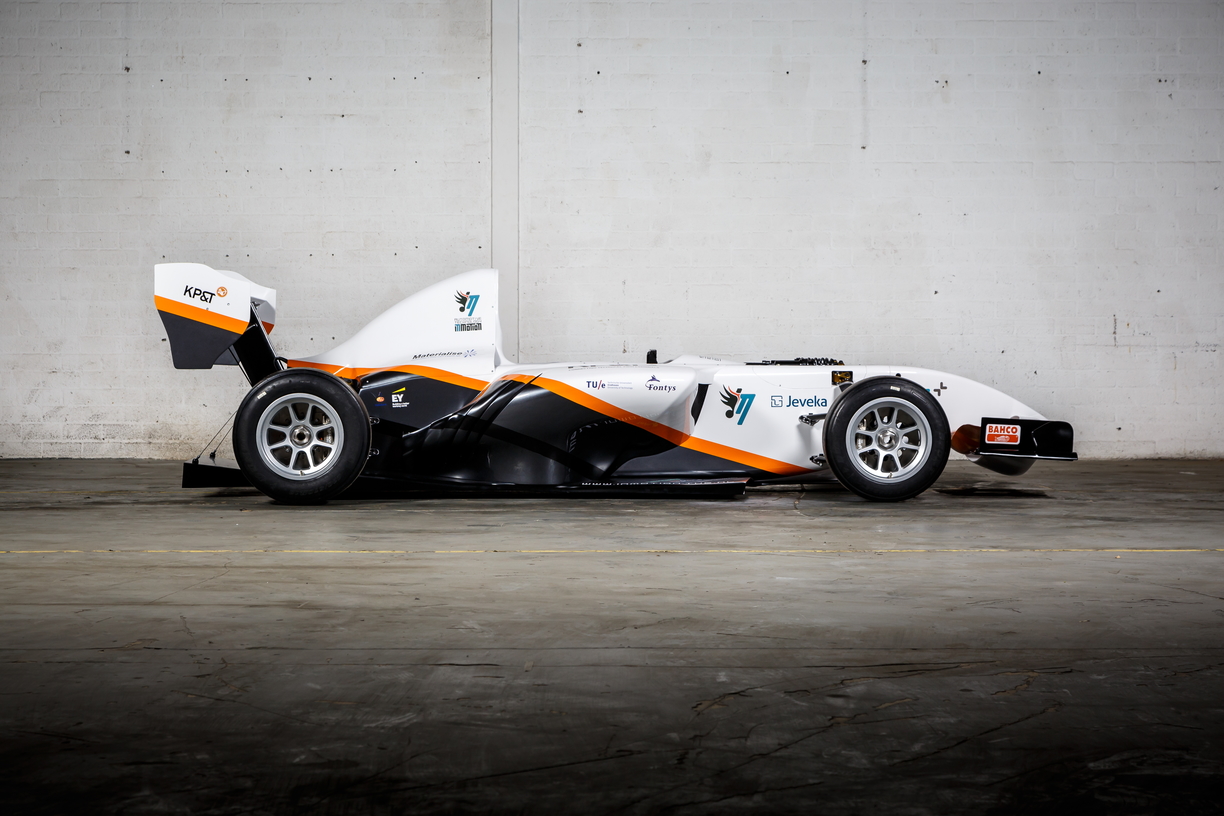InMotion, a team of engineering students from the Technical University of Eindhoven has set itself a challenging goal: to compete in the legendary 24 Hours of Le Mans by 2019. To support their bid for candidacy, they’re first aiming to break the electric-track record at the Nürburgring in Germany next year.

When you’re aiming to make the fastest electric car in the world, every bit of weight optimization matters: so InMotion studied the idea of using lightweight 3D-printed wishbones (also known as Y-joints) for the suspension. The wishbones are the parts that connect the uprights via the wishbones to the chassis of the car. In short, it holds the wheels in place, and copes with all the forces. Quite a crucial part of the car, to say the least.

Strong and Light: Weight Optimization in Titanium
Even though titanium has a very low specific weight, the engineering team at Materialise had a suggestion to make the initial InMotion-designed part even lighter. With our proprietary software program Materialise 3-matic, the Materialise software team could fill the hollow cavities with a honeycomb-structure to make it more lightweight without compromising its strength.
Fast and Precise: The Metal 3D Printing Factory
As one additional challenge, InMotion wanted to find a way to avoid having to use support structures during the printing process which would eventually have to be manually removed. The suspension arms on the car are connected to the uprights via spherical ball bearings, and the fit of these components is critical. InMotion didn’t want the removal of any support structures to pose a last-minute challenge to the fit. Jannis Kranz, design engineer for Metal 3D Printing at Materialise, says:
“Thanks to our software, we can find a build orientation that allows us to print the part as a self-supporting structure, removing the need for a generated support structure. It was a great challenge for our Metal Printing Factory in Bremen, but all in all, the lead time for the entire project was under one working week.”
And it wasn’t just fast: the desired precision was achieved too. “The precise fit that was needed for the assembly of the suspension arms didn’t cause us any trouble,” says Rogier from InMotion. “The accuracy was high: everything fit perfectly from the outset. Any small imperfection would have come up during assembly.”
Keep an eye out for this car when it starts racing next year: but it might just be going too fast.

All images copyright of Gerlach Delissen and InMotion Automotive

